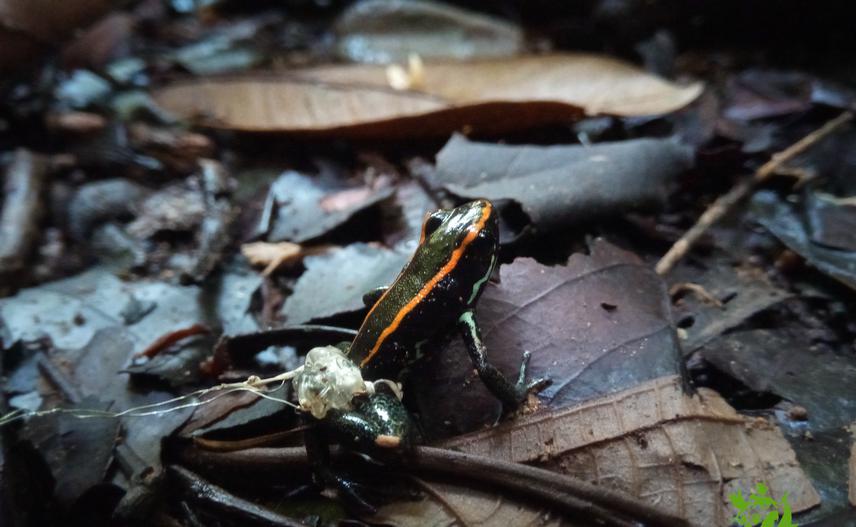Michelle Monge-Velazquez
Our project is centred in the emblematic Golfo Dulce Poison Dart Frog (Phyllobates vittatus), a unique species endemic to the Osa Peninsula in Costa Rica.

Frog with VHF transmitter.
Our project is centred in the emblematic Golfo Dulce Poison Dart Frog (Phyllobates vittatus), a unique species endemic to the Osa Peninsula in Costa Rica. Though designated as endangered (IUCN 2013), its status has likely deteriorated because there are no active conservation efforts currently to protect it, and in some areas, this frog has not been seen since 2002 (IUCN 2002). Due to increasing habitat fragmentation, water contamination, and the illegal pet trade, the Golfo Dulce Poison Dart Frog is in dire need of a Conservation Action Plan. Moreover, investigation of its current distribution and identification of focal areas for habitat protection and restoration are needed to inform an effective conservation plan.
We decided we can address this situation by using “tiny-tech” (radio-tracking), local interviews and citizen science platforms. This can help us engage local stakeholders and raise awareness about important fundamental relationships between local people and their natural resources. Most importantly, this effort will build local conservation leadership with long-term conservation impact. The effort will also contribute key ecological information that can help inform how to best preserve Golfo Dulce Poison Dart Frog in its native habitat and how to maintain this species and other poison dart frogs in conservation-based zoological collections.
Project objectives:
1) Objective 1: Expand scientific knowledge on the ecology of the species: create a baseline of home ranges, population densities, habitat characterization and habitat use patterns.
2) Objective 2: In collaboration with citizen scientists, determine the current and past distribution of the species throughout the Osa.
3) Objective 3: Identify key areas for habitat protection, and habitat restoration.
4) Objective 4: Improve long-term local conservation leadership by raising awareness about the value of this species and building scientific skills and knowledge in local citizen scientists.